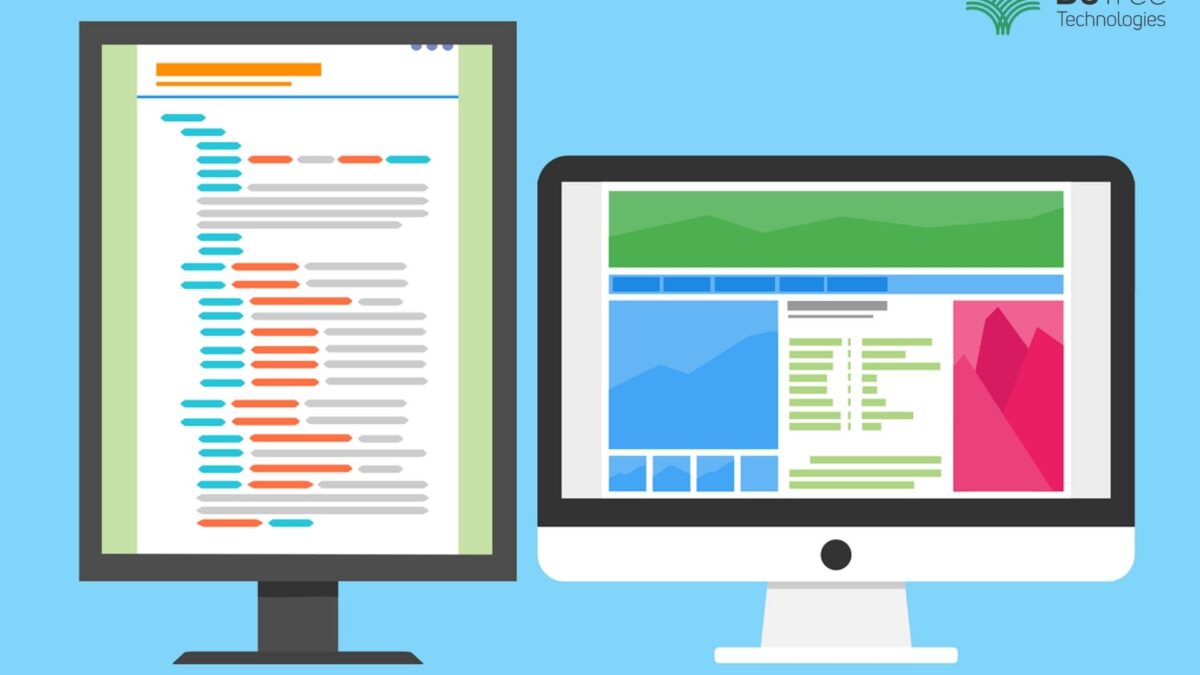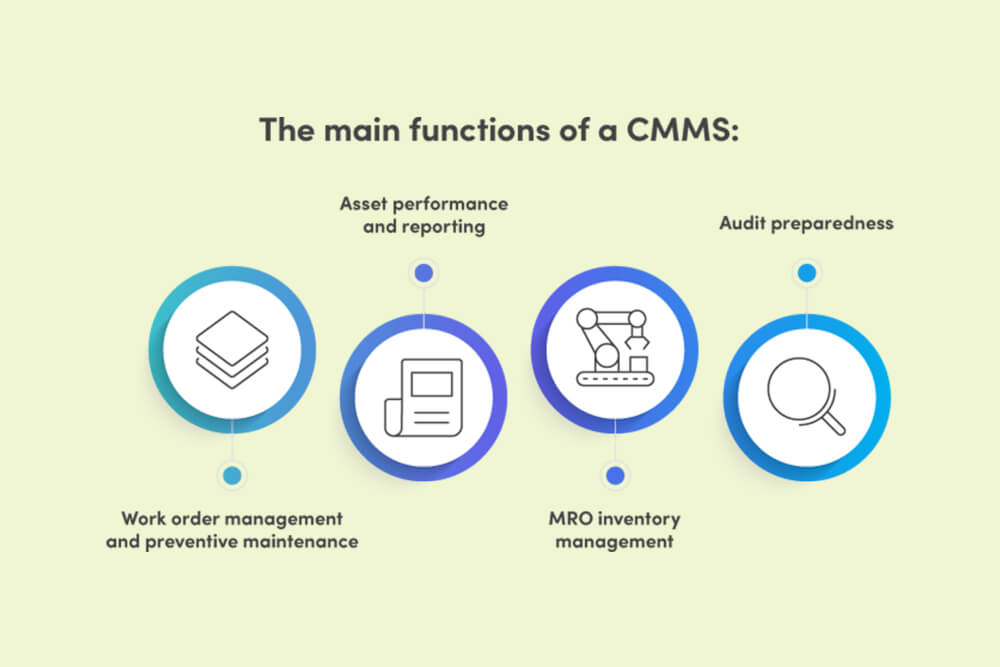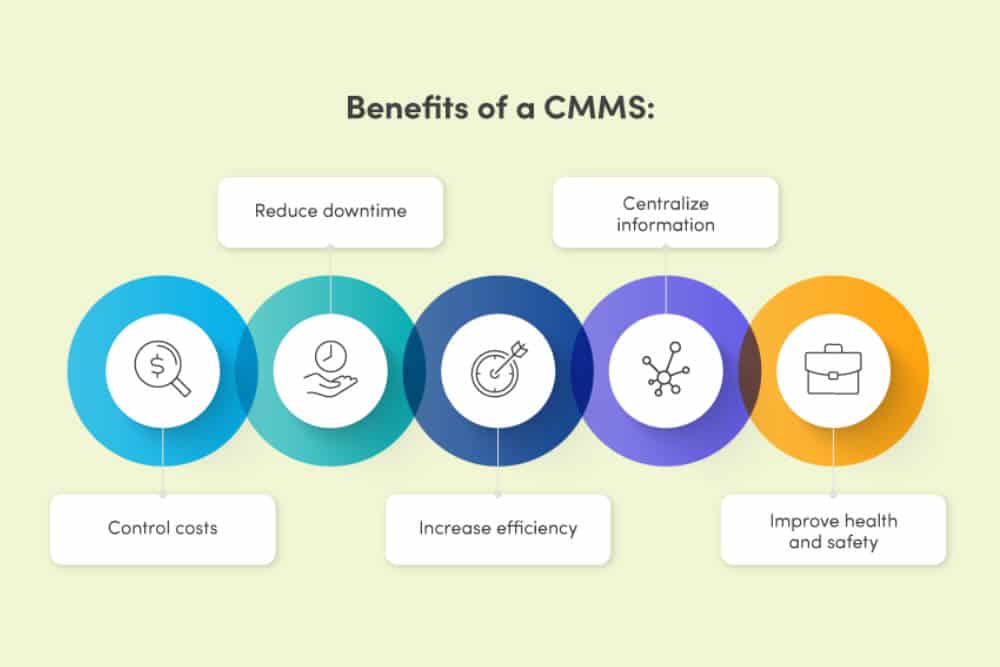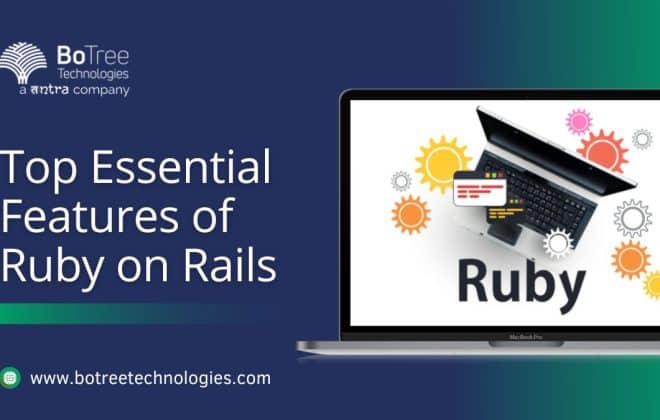
7 Critical Benefits of the Cloud-Based CMMS that Every Industry Needs
Businesses all around the globe are turning to cloud-based services, especially for CMMS or computerized maintenance management software. Cloud-based CMMS is simply safer, faster, and saves you money.
Cloud computing is not a new concept, but the cloud CMMS is still a relatively new thing for a lot of businesses out there. It has gained steady popularity since the early 2000s.

What are Cloud-Based CMMS?
CMMS, which stands for computerized maintenance management software, is used by managers for a myriad of tasks such as inventory management, asset maintenance, and various other internal optimization tasks. This makes business operations much more efficient and smooth.
The Cloud-based version takes it up a notch. Here the whole system can be hosted by a third party in the cloud and can be accessed by users through the Internet. It means even the preventive maintenance programs can be operated through the Internet. Different CMMS can use different cloud-based software for preventative maintenance.
Earlier, a lot of businesses used on-premise CMMS, which required an IT team to operate everything within the premise of the organization; hence, the name on-premise.
But with cloud-based CMMS you don’t have to worry about any of that. It becomes much easier to maintain and operate.
Why are Cloud-based CMMS so Useful?
According to a study done by Intuit, almost 78% of small businesses in the US will be using or adopt cloud computing by 2020. It saves time, cost, and drastically enhances efficiency.
The same goes for cloud-based CMMS. Aside from saving costs, this software can significantly improve asset lifetime and revolutionize how the entire operation works.

We are going to tell you how exactly does this help us by breaking down the 7 reasons for using cloud-based CMMS
1. Get Access With Any Device
Cloud computing and the Internet makes accessing everything more accessible. Even if it is software that can maintain crucial internal operations. All you need is a connection to the Internet and a device.
This includes desktops, laptops, tablets, and even smartphones. Cloud-based CMMS gives the users the advantage of working with their preferred device in their preferred location.
How this works is that the provider hosts the software and manages the databases giving the users easy access to the data. It allows the users to maintain all their tasks effectively without being in a fixed physical location.
The availability of the Internet through mobile networks has also improved drastically, which means no more worrying about downtime. The upcoming rollout of 5G will only enhance the speed and efficiency of every operation done online.
2. Faster Access Means Improved Management
Studies have found that 39% of all maintenance managers use CMMS to maintain organizational tasks which is why it is crucial to have fast access to it.
Cloud-based CMMS is much faster than an on-premise one. Here, you are free from all the hardware hassles and can set up and enter the software within 60 seconds.
This allows you to save time and make faster decisions and get better outcomes.
For instance, whenever an operator reports a problem, the administrator will get notified automatically and will start making a work order. This particular order then passes down to the maintenance technician, and they take care of how and when to proceed with it.
You can see how automatically everything comes in place and becomes much more organized.
3. Reduce Logistical Costs
Since it is all up in the cloud, you won’t need to use your IT team’s resources and time. It won’t require any hardware installation or internal support. You also won’t have to buy any servers to run the software.
Fewer employees will be needed within the organization, meaning you will be able to save up on electricity, overhead costs, and even if the cloud fluctuates, the servers will scale to match the levels. It will indirectly help you reduce your carbon footprint.
All these allow you to cut back on costs significantly.
4. Data Can Always Be Recovered
Data management is difficult for both cloud-based CMMS and on-premise ones. However, cloud-based ones have a significant advantage when it comes to storing data.
While working with on-premise CMMS, you would have to store your data in another server or external hardware routinely otherwise you would lose it if the server or device crashed, but in case of the online ones, the vendors take care of that.
The data are automatically backed up by the vendor on multiple servers. Even if one of their servers crash, you can rest assured that you have all your data intact.
Because of this feature, you can wipe out existing data in your device if you want so that it does not fall into the wrong hands.
5. Automated Updates Make Things Easier
You don’t need to worry about installing or checking for updates because it will always be updated. That is also one of its many perks. You can also install it on your own.
You will get all the regular updates as soon as the vendor grants it. So no more waiting for updates or having the hassle of setting it up. You just have to log in and accept the update.
Let’s be honest, in this highly competitive and fast-paced world, we don’t have the luxury of waiting for updates because waiting is the loss of efficiency and ultimately, profitability.
6. Vendors Will Handle Most Inconveniences
Like we previously mentioned, the vendors will regularly back up your data and keep your software updated. That’s not all.
The most significant advantage is that even if the server somehow malfunctions, the vendors will take care of it. It will save you the time and money of sending your own IT guys.
If any problems occur, then you just have to let the vendor know, and they will know exactly what to do. They have the right team and resources for any kind of troubleshooting.
7. Easily Monitor 24/7
Another flaw of the on-premise CMMS is that whenever the server goes down, the whole operation stops until it gets back up again. Sometimes it could take hours to get everything back up and running.
Meanwhile, the cloud-based ones are always checked upon, and even when one server goes down, the co-related ones are ready to use. They also have their team on standby so they can solve any problems as they occur.
This allows you to monitor 24/7 and lets you analyze the real-time changes of work orders or maintenance orders related to asset and inventory management.
How to Get Cloud-Based CMMS?
Now that you know the benefits of cloud-based CMMS if you are wondering how you can get one for your business, then you would have to go through a few steps. This is because every company has different needs, and every CMMS is created differently.
You will have to follow these 3 steps to get your CMMS up and running online:-
Step 1. Fix your requirements
Like we said, each CMMS is created differently, and each vendor has its unique features as well as requirements. You can receive this requirement list from the vendors themselves. Simply match them with your required needs to see if the vendors can provide it.
Step 2. Compare and Contrast
After you get your user-specific requirement list, use it to compare and contrast vendors to figure out which vendor is the best for you. After that, you can create your request proposal that has to include information about your plans, needs, and budget.
Step 3. Finalize the price
Most Cloud-based CMMS are bought on a subscription basis and require zero upfront cost. The subscriptions are monthly basis and can range anywhere from $60 to $120 depending on the vendor. The price is based on users and different levels of the software you will require.
The disadvantage of Cloud-Based CMMS
Up until now, all we have talked about is how amazing this online version of the software is. What about the challenges associated with it?
Well, of course, there is nothing without flaws, but the advantages greatly outweigh the small weaknesses.
The main concern for the cloud-based version is the credibility of the vendor. With the on-premise software, you have better control over your data and can personally handle any inconvenience. This is done mostly by large corporations that have strict requirements and want full control of their sensitive data.
Other than that, cloud-based CMMS excels at every point when it comes to data management, security, convenience, and cost.
Final Thoughts
Upgrading to the cloud-based will significantly boost your overall performance and help you but before upgrading always consider the financial and technical standpoints to make an accurate decision.




